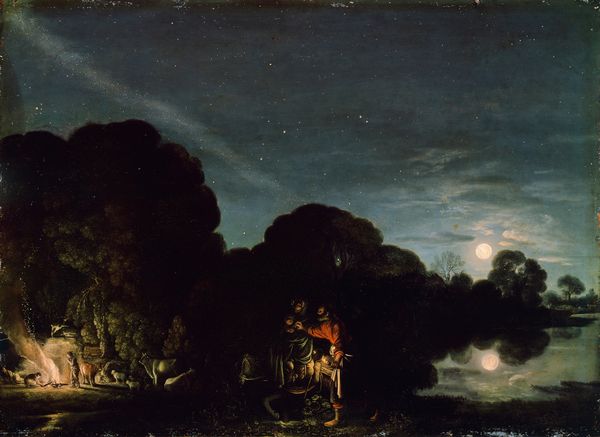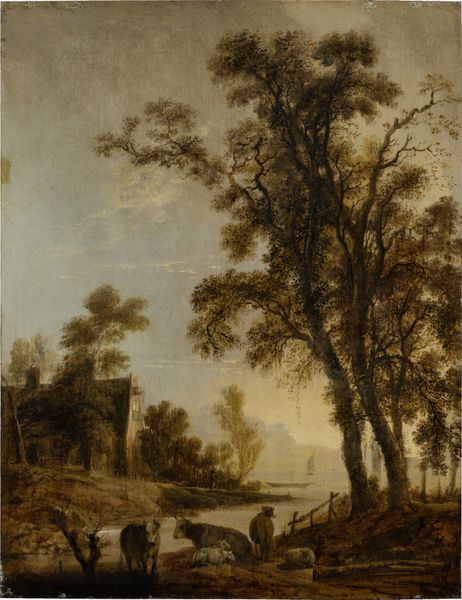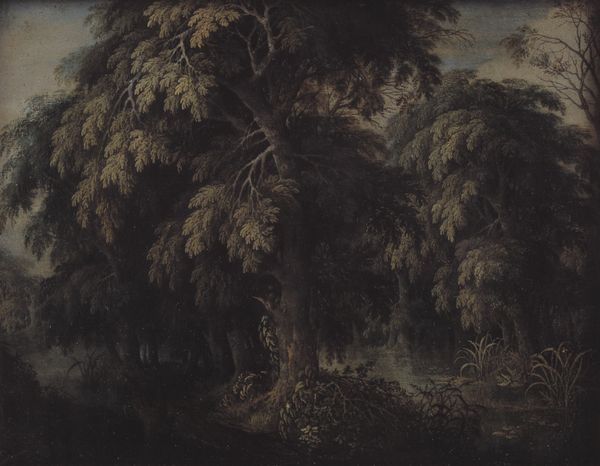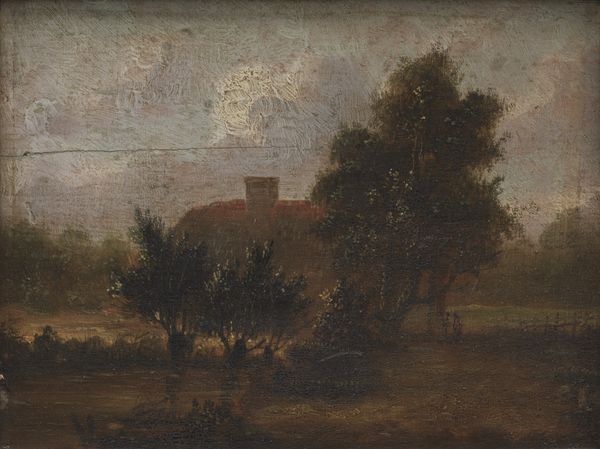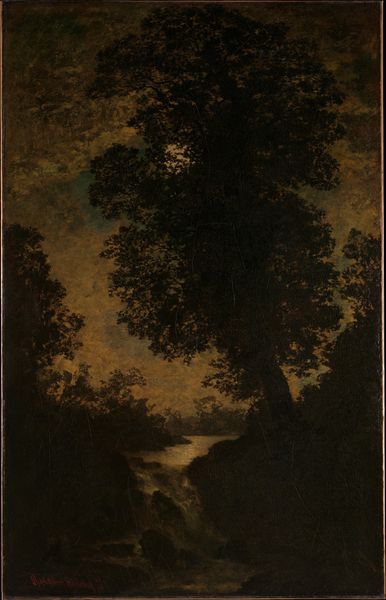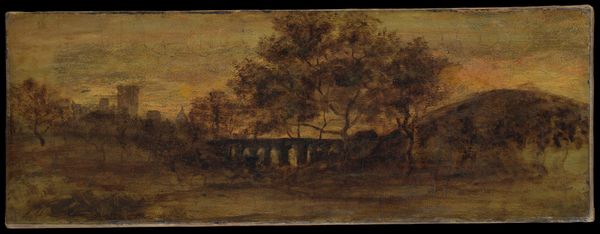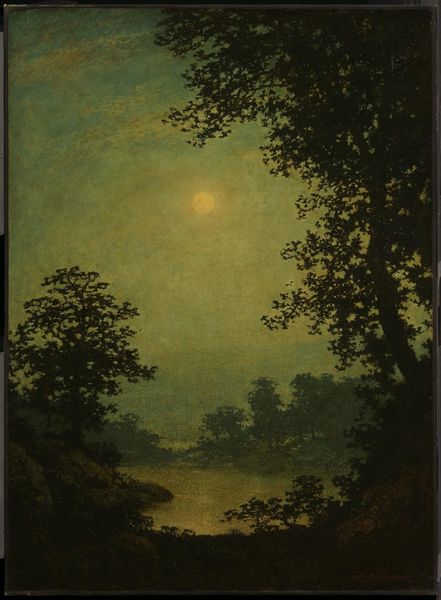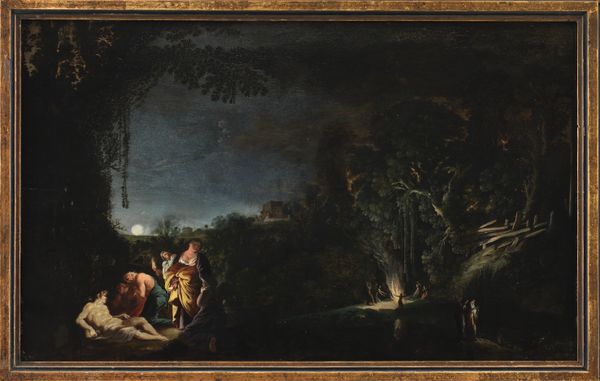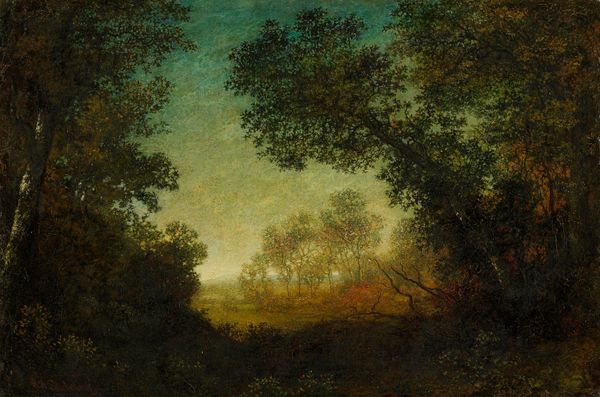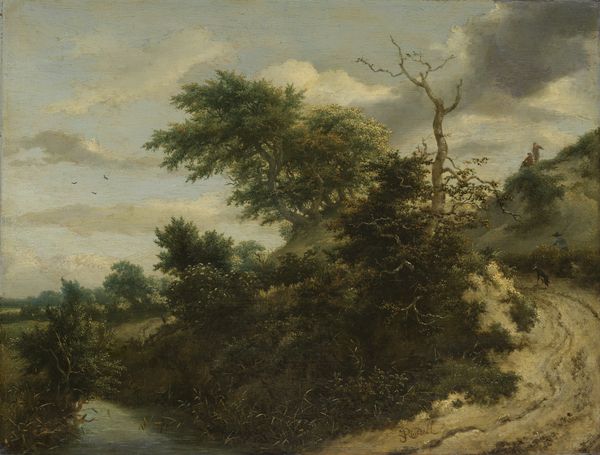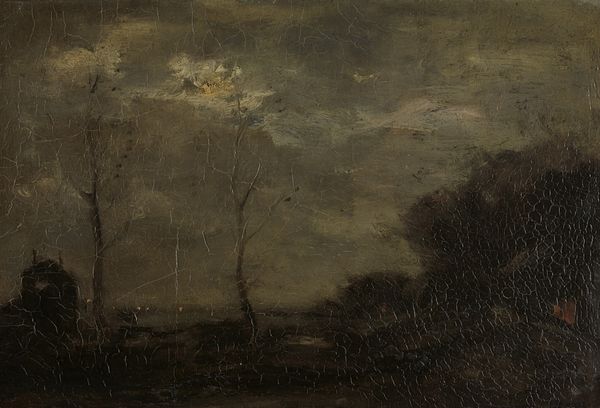
painting, oil-paint
#
baroque
#
painting
#
oil-paint
#
landscape
#
figuration
#
oil painting
#
genre-painting
#
history-painting
#
realism
Dimensions: height 50.5 cm, width 57 cm, depth 5 cm
Copyright: Rijks Museum: Open Domain
Curator: This oil painting, dating from somewhere between 1635 and 1678, is entitled "A Buzzard Attacks two Ducks". The artist credited with its creation is Dirck Wijntrack. What is your initial impression? Editor: Violent poetry! All wings and feathers caught in a struggle against this… golden gloom. It feels intimate yet expansive, you know? The stillness of the water contrasting the raw panic of the ducks is pure drama. Curator: Indeed. Wijntrack uses a fairly limited tonal range here, mostly earth tones, which contributes to the scene's sense of immediacy, perhaps to emphasise the brutality of the predation. We could analyze this composition in terms of its opposing vectors, the upward thrust of the buzzard versus the ducks' frantic, lateral flight, and consider it in relation to power dynamics of its time. Editor: You're spot-on about the earth tones intensifying everything. I imagine the artist pausing, brush in hand, contemplating the predator's instincts mirrored perhaps within himself. I wonder if he saw his own internal struggles mirrored there—between ambition and… grace, perhaps. Curator: The Baroque elements are interesting, particularly the dynamic composition. We can observe here that even with limited tonality there is great use of textures. It's realism grounded in symbolic understanding of nature as chaotic force. Editor: Maybe Wijntrack is making us complicit here too. After all, we gaze, perhaps a little too comfortably, at this struggle. The painting demands we meditate about beauty and violence living side by side, isn’t it? Curator: One might further interpret this as reflecting societal hierarchies, nature's harsh realities presented plainly without romanticisation. Editor: So it's not just ducks and a buzzard but society under a gilded magnifying glass. Quite chilling when you look at it like that. I now see something unsettling I didn't notice initially. It gets under your skin, this piece, doesn’t it? Curator: Precisely. And on that point, perhaps it's a suitable moment for our visitors to reflect and consider that very notion.
Comments
No comments
Be the first to comment and join the conversation on the ultimate creative platform.
